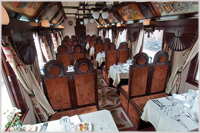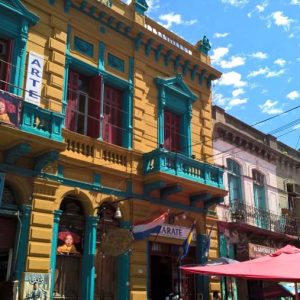The Trans Siberian Railway is one of the greatest journeys on earth. It’s for those people with a sense of adventure, a liking for the unusual and and the spirit of “youth”. It is one incredible train journey from Red Square to the Great Wall, taking in Siberia, Mongolia, the Gobi Desert and arriving in the magnificent city of Beijing.
Before immersing yourself in the sights, sounds and cultures across 9000 km of vast expanse, contrasting vistas, memorable sights and anecdotes that will be with you forever, take a read through some of the facts and myths…..

1. There’s no train that is named the “Trans-Siberian Express”. The Moscow-Vladivostok route is served by the “Rossiya”, whereas Moscow-Beijing routes are usually achieved by using a combination of sectors on different trains.
2. All of the routes are working trains and travellers journey with “locals”.
3. At 9,216 km (Moscow-Vladivostok) it is the longest direct rail route in the world, and entirely within Russia. The Moscow-Beijing route is shorter, at 9001 km.
4. The original Trans-Siberian railway was built from Moscow to Vladivostok on the orders of Tsar Alexander III.
5. Despite the appeal of following the original route, in practice most people are dissuaded from Vladivostok by three factors: (i) poor availability of onward connections to Asia or return flights to Europe (ii) the greater tourism possibilities of Beijing (pop 15m) compared to Vladivostok (pop 600,000); (iii) missing the chance to visit Mongolia en-route.
6. The route more favoured today is from Moscow to Beijing on the historic Manchurian route and takes a week.
7. The alternative Trans-Mongolian route via Ulan Bator to Beijing saves 16 hours (and 1,136 km).
8. The route to Vladivostok was built between 1891 and 1916. The “first rivet” was ceremonially hammered home by the future Nicholas II, the last Tsar. Under Communist rule he would later be taken to House Arrest as a prisoner on board the Trans-Siberian.
 9. The journey spans eight time zones.
9. The journey spans eight time zones.
10. Around 30 per cent of Russian exports travel on the line.
11. The train carries about 20,000 containers per year to Europe.
12. The train has 2nd class 4-berth compartments (called kupé) and 1st class 2-berth compartments (called spalny wagon or 'SV') and a restaurant car.
13. The Trans-Siberian is longer than the Great Wall of China and US Route 66.
14. Since Russia and Mongolia use broad gauge railways while China uses the standard gauge, there is a break-of-gauge, meaning that carriages to or from China cannot simply cross the border, and each carriage has to be lifted in turn to have its bogies changed. The whole operation, combined with passport and customs control, can take several hours.
15. Rudolf Nureyev was born on the Trans-Siberian near Irkutsk in Siberia, while his mother Farida was travelling to Vladivostok, where his father Hamat, a Red Army political commissar was stationed.
- Read: Odette Fussey of the Russia Experience unlocks the magic and mystery of one of the world's most iconic journeys












One Response
Wow, the Trans-Siberian Railway takes you on an incredible journey through Russia’s vast landscapes and offers a unique way to experience its fascinating culture!